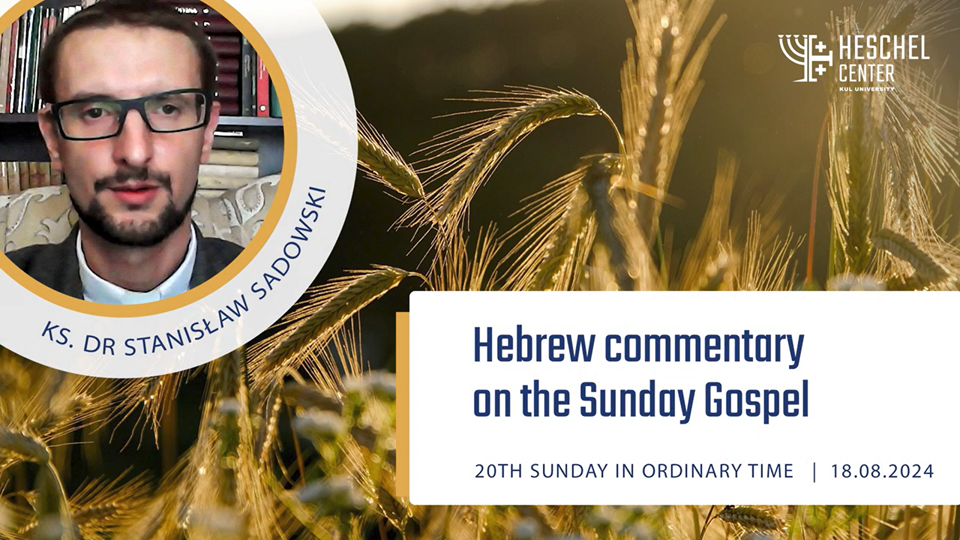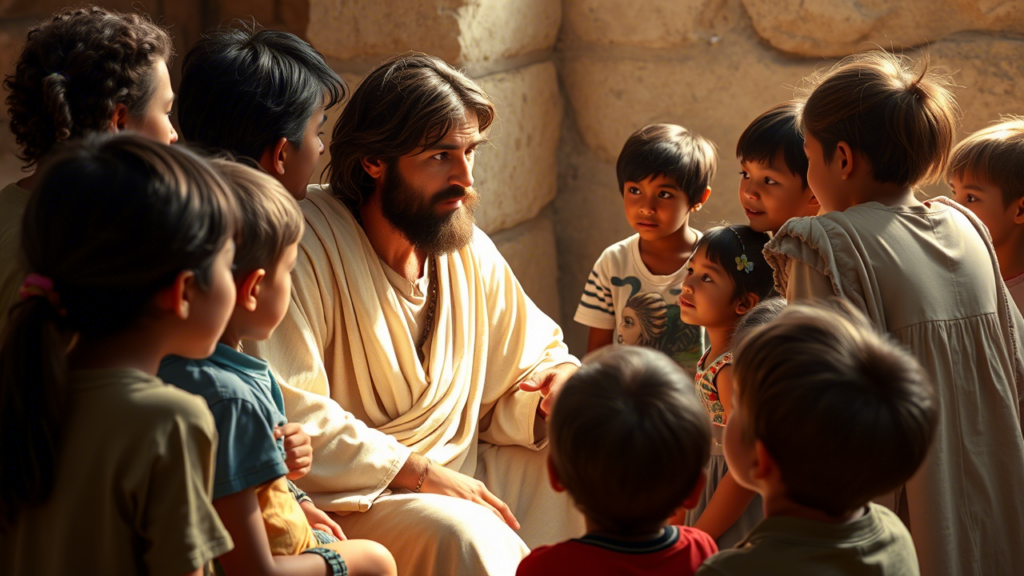Heschel Centre for Catholic-Jewish Relations at the Catholic University of Lublin
18 August, 2024
5 min
Judaic inspirations and innovative themes in Jesus’ Eucharistic speech
“According to medieval texts, feeding on the Torah was supposed to transform and identify a person with what he eats. “You are what you eat” is a phrase some scholars use to describe the relationship between food regulations and identity construction in Judaic tradition”, stresses Rev. Dr. Stanislaw Sadowski, an assistant in the Department of […]

“According to medieval texts, feeding on the Torah was supposed to transform and identify a person with what he eats. “You are what you eat” is a phrase some scholars use to describe the relationship between food regulations and identity construction in Judaic tradition”, stresses Rev. Dr. Stanislaw Sadowski, an assistant in the Department of Biblical Theology at the John Paul II Catholic University of Lublin, in his commentary for the Catholic University of Lublin Heschel Center for the Sunday, August 18.
The commented text is part of a larger whole consisting of verses 22 through 59 of the sixth chapter of the fourth Gospel. In Christian tradition, we refer to this text as the Eucharistic speech. Although arranged in a dialogue, it has the character of a revelatory speech that reveals God’s mysteries to us. The passage under comment uses the important revelatory formula ego eimi ‒ “I am” with an object ‒ here it is the phrase “living bread.” Within the framework of John’s Gospel, these formulas play an important role, revealing some aspect of the mystery of Jesus and His work and mission.
The last verse of the fragment of the Eucharistic Discourse commented on today shows us its setting: the synagogue in Capernaum. This is significant because the synagogue was a place where the Jewish community could listen to the Torah and be inseparable from it.
In Judaic tradition, the motif of feeding on the Torah is present; it is then portrayed as food. Given to the people by Moses, it is the basis for living following the Covenant made with God. What man eats is always very significant in biblical tradition. Food regulations were supposed to be what distinguished covenant members from others, and their observance, seen as the fulfillment of God’s will, was supposed to make man more like God. Thus, it influenced the sense of a unique, distinct identity of the Covenant people. According to medieval texts, feeding on the Torah was supposed to transform and identify a person with what he eats. “You are what you eat” is a phrase some scholars use to describe the relationship between food regulations and identity construction in Judaic tradition.
It seems that in this relationship to what we feed or should feed, we can see elements of a shared sensibility, though perhaps realized in different ways. This may help Christians better understand the commented fragment of the Eucharistic Speech, drawing attention to the importance of the various dimensions of the meaning of what we eat and feed ourselves with.
The manna given to the people as physical food in Moses’s time foreshadowed other food. Jesus is more than Moses. He not only feeds the people but also becomes bread himself. Of course, what we believe as Christians about Jesus, his identity, and his mission is difficult for our Judaic brothers and sisters to accept, but it is at the heart of Christians’ religious beliefs.
In the passage under review, the motif of bread as life-giving food is used to show the true purpose of the speech—to point out the source, nature, and value of the food that Jesus gives—His Body and Blood. All this takes place in the context of the life theme, which is spoken abundantly in this passage.
Jesus refers to himself as the living bread. Bread is the food that sustains life. Whoever “feeds on Jesus” receives the gift of life, not only in the ordinary physical dimension but also eternal life, which was not provided by the manna from heaven given in the time of Moses. So, we are talking about the eschatological dimension of this food and this life. The possibility of a posthumous existence of the human soul and eschatological considerations regarding the resurrection of the dead are not at all concepts foreign to Judaism. However, it is easy to understand the dismay of listeners who wonder how Jesus can give his body for consumption. Commentators on this text have also puzzled over the meaning of these words, offering two complementary explanations:
First, for us Christians, Jesus is the Incarnate Word of God – the Word we are to feed on and become like him. In Jesus is also revealed God’s faithfulness to the predictions given, God’s love, the fulfillment of the predictions given to the prophets, the Word that becomes Flesh – to eat the Body and Blood of Jesus is to receive his Person and teaching in faith. Second, it is a sacramental view of the gift of the Eucharist, which Jesus establishes. According to the faith of the Catholic Church, by receiving Holy Communion during the Eucharist, we truly receive His Body and Blood, albeit in the form of bread and wine. The life-giving power of this gift flows from the sacrifice He makes for the life of the world, which may be a reference to the words spoken at the institution of the Eucharist. These words can thus be taken as a commentary on the Mystery of the Eucharist and its institution.
Eating this food bears fruit—not only in sustaining our life (including in its eschatological dimension) but also in communion—communion with Jesus. This is not an identification in which a person would completely lose his or her distinctiveness and identity, but it is the building of a community of persons.
Finally, eating this food is also what builds Christian identity. As His disciples, as participants in God’s life, and as brothers and sisters in Christ. This identity is strengthened through participation in the Eucharist, which, it is worth adding, we celebrate by preceding its consumption with listening to God’s Word, and by making us more like Jesus through faithful participation in these gifts, it is supposed to make us those who will become bread, as Brother Albert Chmielowski read this truth well in his famous phrase – “be as good as bread.”
Feeding on God’s gifts, being genuinely open to them, and accepting them with humility, faith, and openness make a person a so-called “God’s man.” Such a person will always have a “human face.”
About the author:
Rev. Dr. Stanislaw Sadowski is a priest of the Diocese of Kielce, ministering at the Rectoral Academic Church of St. John Paul II in Kielce. He is also a lecturer at the Higher Theological Seminary in Kielce and an assistant in the Department of Biblical Theology at the John Paul II Catholic University of Lublin.
Related

Explaining Holy Week to Our Children: A Journey of Faith and Hope
Laetare
11 April, 2025
4 min

Christian Leadership in Business: A Model of Humility, Justice, and Solidarity
Javier Ferrer García
10 April, 2025
3 min

Guiding Our Decisions with God’s Will in Daily Life
Patricia Jiménez Ramírez
10 April, 2025
4 min

What are you going to do with your life?
Luis Herrera Campo
10 April, 2025
2 min
 (EN)
(EN)
 (ES)
(ES)
 (IT)
(IT)

